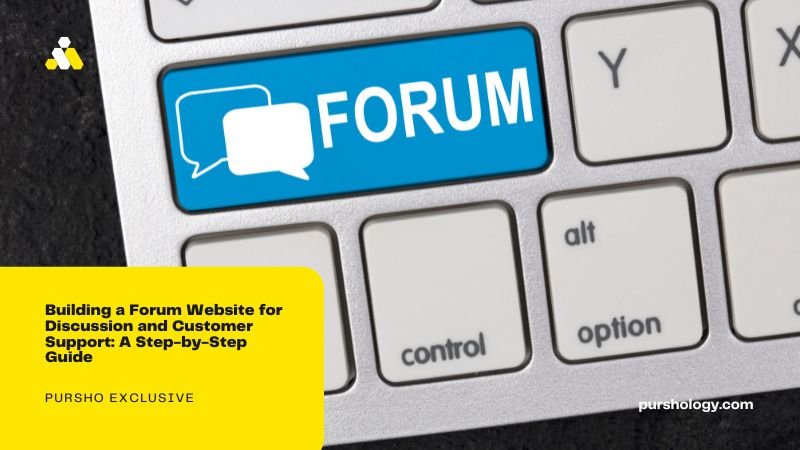In the digital age, creating an online space for discussions and customer support can greatly benefit businesses and communities. A forum website serves as a platform where people can share ideas, ask questions, and find solutions. This step-by-step guide aims to walk you through the process of building a forum website, making it accessible and easy to understand, even for those new to the world of web development.
- Define Your Purpose:
Before diving into the technical aspects, it’s crucial to clearly define the purpose of your forum. Are you creating a space for hobbyists to discuss shared interests, or is it meant to offer customer support for your products or services? Understanding your forum’s purpose will guide decisions throughout the development process.
- Choose a Reliable Hosting Platform:
Selecting the right hosting platform is essential for the success of your forum. Look for a reliable service that provides sufficient bandwidth, storage, and support for your website. Popular hosting providers include Bluehost, SiteGround, and HostGator, offering user-friendly interfaces and excellent customer service.
- Select a Suitable Forum Software:
Choose forum software that aligns with your goals and technical expertise. Options like phpBB, MyBB, and Discourse are popular choices due to their ease of use and community support. Consider factors such as customization options, security features, and user-friendliness when making your selection.
- Set Up Your Forum:
Once you’ve chosen your hosting platform and forum software, follow the installation instructions provided. Most platforms offer straightforward installation processes, and many hosting providers have one-click installations. Configure basic settings, such as the forum name, theme, and user registration options.
- Customize Your Forum:
Personalize your forum to create a unique and inviting space. Customize colors, layout and theme such as phpbb themes to match your brand or community’s aesthetic. Adjust settings for user permissions, moderation tools, and other features to ensure a safe and enjoyable environment for participants.
- Establish Categories and Sections:
Organize your forum into logical categories and sections to make navigation easy for users. Whether it’s dividing discussions by topics, products, or services, a well-structured forum encourages engagement. Consider adding dedicated sections for announcements, feedback, and introductions.
- Implement User Registration and Login:
Enable user registration to encourage community participation. Make the registration process simple, requiring only essential information. Implement secure login features, such as CAPTCHA, to protect your forum from spam and unauthorized access.
- Foster Community Engagement:
Encourage interaction among forum members by creating engaging content and participating in discussions. Consider implementing features like polls, badges, and user rankings to make the forum experience more enjoyable and rewarding.
- Moderation and Security:
Implement moderation tools to ensure a positive and safe environment. Assign trusted moderators to enforce community guidelines and handle any issues that may arise. Additionally, prioritize the security of your forum by regularly updating software, using SSL certificates, and employing other security measures.
- Regular Maintenance and Updates:
To keep your forum running smoothly, perform regular maintenance tasks such as updating software, checking for broken links, and optimizing performance. Stay engaged with your community, listen to feedback, and make improvements based on user suggestions.
Conclusion:
Building a forum website for discussion and customer support is a rewarding endeavor that can foster community, provide valuable insights, and enhance customer satisfaction. By following this step-by-step guide, even beginners can create a user-friendly and engaging platform to connect with their audience. Remember, simplicity and accessibility are key, making the forum a welcoming space for users of all backgrounds and ages.







